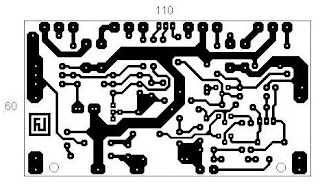1500W Power Amplifier Circuit Diagram
This is a very high 1500W power amplifier circuit diagram by Rod Elliott. The circuit is built using 10 pairs of power transistor MJ15024 and MJ15025 (or MJ21193/MJ21194), then it will use 20 pieces of power transistor for final amplification.
With very high power audio output, then of course it will need power supply with high power output. This amplifier require dual output power supply 130V.
This is a very high 1500W power amplifier circuit diagram by Rod Elliott. The circuit is built using 10 pairs of power transistor MJ15024 and MJ15025 (or MJ21193/MJ21194), then it will use 20 pieces of power transistor for final amplification.
With very high power audio output, then of course it will need power supply with high power output. This amplifier require dual output power supply 130V.
















